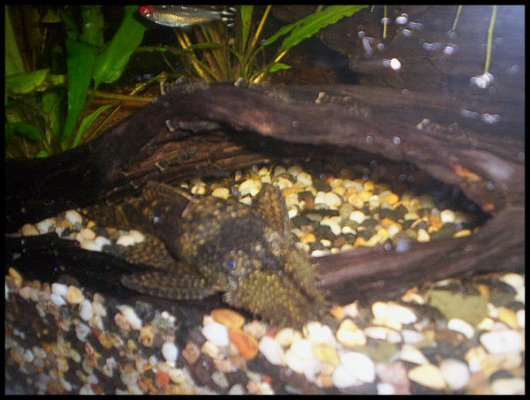The following is a reply on my tank specs and my last ditch post on the topic of Bristlenose. I’ve added photos that I included in my other posts in case they will not be available in the coming weeks. I am only learning myself and give the following advice in the context that it may help or may not help you. I’ll hit on what aspects I’ve been helped with in this forum and provide some research I have gathered from the internet with a brief summery on how I added that information to create an environment that works for my bristlenose in my tank. I’d have to introduce sharks into the equations to make em stop breeding
WATER – current & aeration
WOOD
TEMPRATURE
LIGHT requirements
FOOD
PLANTS
BRISTLENOSE LOGS
TANK MATES
SEXING
THE CLUTCHES OF EGGS AND HATCHLINGS
ENVIROMENTAL SET-UP
My Tank Size is:
Tank is 48"/18"/18"
WATER: PH7.0
I don’t have a test kit on hand but believe the ideal PH is 7.0
They will accept pH 5.5 - 7.8 with some species “may” needing soft water.
Keep the ammonia levels down by doing water changes accordingly as needed; more so if your raising babies in community tank. Those using bio filters such as my self don’t have to worry too much, although can still benefit from doing so in small amounts.
Water Current:
Many Bristlenose enjoy a little current every now and then and it plays an important role environmentally. The males take on the Job of fan flapping to keep water moving over the eggs so I positioned His log to allow a slight current to enter. It is now his preferred breeding home. (I use a power-head for current and run it down the back wall) I am now using two aeration devises. One a disc and the other, your basic air stone. Just remember they need a water current and good aeration.
Water Stain: (colour)
My observation is that Bristle nose LOVE having stain in their water and my tetras have had no problems with it. I’ve been told by a reliable source (in the fish business) that many bristlenose breeders use black water. (the stain effect is produced by using Iron Bark and other woods. I beleive the stain is often refered to as Tenon?) I have to fully agree that it is one of the conditions that help. I just had to do a little research to reduce the amount of stain resulting for the amount NEW Teak Drift Wood I recreantly added. It usually comes down to a personal preference with how much stain people. Since where on the topic of wood, I’ll mention it next.
WOOD!
Some people breed without it and others say it’s a must. What I can say, when I added 5 large irregular shaped pieces of "Teak Drift Wood" to form a number of caves, the bristle nose have been breeding like crazy. I also made several depressions by pushing the gravel down in locations in and around the caves for extra hidey holes and sucking spots.
The wood has added a number of helpful conditions with breeding in mind. As already mentioned, the Stain I believe has added a more natural home and I've also read can be of benefited to some types of plants. The extra Hidey holes, cracks and crevices has also helped with making the fish more confident in their environment which I’ll hit on in a with the Environment factor soon enough.
The debated thing is wether or not they need it to chew on? I see them chewing the wood HEAPS and believe it does aid in their digestive going ons, especially if they have a lot of variety in their diet.
TEMPRATURE… 78 - 90 degrees Fahrenheit, although most will prefer around 78 degrees Fahrenheit.
Mine are usually kept around 26.5 Celsius but can handle up to 30 and down to 24 Celsius. (That’s only my observation)
Well I'm guilty of using a very old heater; (soon to be upgraded) my temps rise and fall. Although I have not lost any fish at the moment winter is coming and I really do need to upgrade to a more reliable heater. Having said that I have read how many fish keepers try adjusting the temperatures in their tanks by means of water changes in an attempt to mimic a "Cold Front”. Reason for this is that a lot of fish are spurred on to breed with the onset of rain and the changing in weather that it brings. I’m not sure but I believe my temperature changes (as slow and irregular as they are) may also trigger such conditions.
WARNING...I do not recommend using an old heater, and I am only assuming that it may have helped with temperature changes. Temperature spikes that happen more suddenly as with sudden water changes can lead to white spot with some species and the stress eventually killing them. I can say that the water change method does work (50% cooler not cold). It’s a trial and error thing so be careful and consider the other fish you may have. The position and how fast you drop the water is something to think about.
LIGHT requirements:
Its said that bristlenose don’t like to much light. I do tend to agree they hide out a bit away from too much light and by adding darker gravel they seem to come out more often. The darker gravel does not tend to reflect the light as much and has aided in brightening the colours of my neons, glowlights and rummy nose tetras. Plants can also be used to provide shady spots to assist with spawning spots.
FOOD:
Basically I feed high quality Veggie and Algae pellets every second day with high quality tropical flake every day
(I consider they only go the scrap flakes from the left overs of the tank mates if hungry)
I will occasionally feed frozen blood worms (protein source) but have noted (and been warned) that too much will constipate them. So the Blood worms are only twice a week if not once!
The Hatchlings are only fed crushed veggie and algae pellets since I have separated them from the tank. I am only learning now how to care for them in a growing out tank as I have been letting them grow in main tank at this stage and pulling them out later. Rasing Hatchlings will have to be guide in its self and is harder to do than getting them to breed.
They also like sucking algae off plants and is considered to add variety to their diets. You could further investigate the different types of vegetables and other protein pellets + even more sources of food on the internet. I find using the veggie/algae pellets with the occasional blood worm and a suck here and there from the plants/drift wood more than enough to keep them content. They will even eat dead fish if the need arises, however I’ve been a little more successful at keeping most of them and there tank mates, as not to encourage it
PLANTS:
I have TRUE! Aquatic Plants such as anoobis and java fern with several other potted species. (They love the fine hairy like pond moss substance not sure of true identity) Most of the plants I have selected will grow in low light levels and are have broader leaves providing plenty of shade where needed.
I gave up on Imitation aquatic plants. You know the type; you buy them only to go back to the store within a few weeks to start all over again. It’s darn expensive in the long run and too much maintaining. True aquatics will cost more upfront but are well worth it in the long run. I find them to also be hardier making good permanent homes for some of your fish and a good food source for your bristlenose.
Bristlenose Logs:
These can be bought from most aquarium shops. I find a lot of mine prefer to breed in these (not always) and make a handy home. I use a couple of these in combination with the drift wood caves. Basically the male will have his spot and the female have hers. You can find out more about this under Behaviour on the internet. It’s important to have a lot of hidey holes and the bristle nose log is an excellent choice where with the right tank setup they will usually breed in as the preferred location.
SEXING…When they get large enough you will see that the males have large Bristles on their nose area and that the females will be very small if indeed none at all. Females tend not to be as big and look somewhat less robust. I got mine young, and luck had it that I had 2 mating pairs. I prefer to keep them 2male to 4females in a 4 foot tank. The males may fend each other off to some degree but I have kept this problem down by having lots of homes and space throughout the tank. An important note to make here, is to make sure your pairs are not from the same stock! Inbreeding will result in genetic deformations, such as forked tails and the like. I now drive a few hours to locate differnet stock and always ask who the suppliers are.
Tank Mates:
Basically what you want are very peaceful fish that are not territorial in any way. Having such fish will upset the balance of power and offset breeding habits. I guess you could always throw in some clownloaches for a snail clean up crew briefly as I have been thinking about, but you would need to remove them as they would soon claim territory to the bottom level.
My tank mates are primarily Tetras
9 Neons
9 Glowlights
6 Rummy nose
With the exception of 10 Zebra danios who at times love to play at the top levels and keep the tetras lively (They can be slightly aggressive, more playfull if anything and keep clear of the bristlenose) They are my next favourite in the tank and awesome to watch at feeding times.
5 corry catfish (extra clean up crew)
The clutches of eggs and hatchlings.
Breeding them is actually a lot easier than raising them as I was just warned. And guess what; the ones I just recreantly rescued are all but dead now. I got a fair Idea what happened but don’t want to go into it as I’ve already said it’s a whole different kettle of fish in its own right. Lets just say in the instance of using a small container like I did and an air stone, changing the water was needed a lot more than I thought required and the cold snap we had last night did not help.
Basically when the Bristlenose are going at it hell for leather, you’ll probably come across yellowish, reddish, pinkish clutch of eggs as pictured at the end of this post. Apparently its not uncommon for Dad to kick out a clutch to make room for others in hest nest. I advise to leave them unless you have the necessary setup to extract them and knowledge there after. Anyways, you will note the eggs are fertilized by seeing a dark area within the yoke sack indicating the from of life within, as delicate as I found them to be. When they hatch, they will still be enveloped with the sack and use it to feed off. At this stage they seem to cling onto the objects around them as they did my container. Eventually they will be free swimming and in need of another food source.
Other than my recent attempt to save a clutch I usually leave them to grow enough to carefully net and move to another tank. Once again I’ll leave the topic of raising them to the more advanced out there. I’ve mainly researched on getting them to breed which I’ll now summarize with the Environmental set up.
SUMMERY!
Basically its all in the ENVIROMENT as is with most fish. I tried my best to identify the bristlenoses’s needs + found out more on behaviour and put it all together in the Tank Set-Up. The only point I need to stress here, is that you don’t just throw all those needs in the tank at once like my kids throwing a pot roast together because there hungry.
If your making a community tank with a few tetras or other non aggressive fish, keep in mind they will need a still area within the tank. You can achieve this by carefully positioning your driftwood caves in line with some current in order to slow it down. Plants are best placed near logs/drift-wood and the like that become homes, to provide their preferred shade. Make sure you have enough room and hiding places if you have more than one male. Provide lots of aeration. Add dark gravel to lower the light levels at the bottom of your tank. Always have more females than males. Don’t overfeed, allow them to get a good variety between algae tabs/plants & off the walls, veggie pellets, protein (blood worms twice to once a week)
Try the water change techniques to spur on breeding it you like.
All in all keep it clean and give them what they need (Make it their tank!), keep it peaceful and you’ll soon start wondering how to make them stop breeding.
I've pretty much covered the basics, you can find whats not here elsewhere either through this forum or on google.
Good luck...
WATER – current & aeration
WOOD
TEMPRATURE
LIGHT requirements
FOOD
PLANTS
BRISTLENOSE LOGS
TANK MATES
SEXING
THE CLUTCHES OF EGGS AND HATCHLINGS
ENVIROMENTAL SET-UP
My Tank Size is:
Tank is 48"/18"/18"
WATER: PH7.0
I don’t have a test kit on hand but believe the ideal PH is 7.0
They will accept pH 5.5 - 7.8 with some species “may” needing soft water.
Keep the ammonia levels down by doing water changes accordingly as needed; more so if your raising babies in community tank. Those using bio filters such as my self don’t have to worry too much, although can still benefit from doing so in small amounts.
Water Current:
Many Bristlenose enjoy a little current every now and then and it plays an important role environmentally. The males take on the Job of fan flapping to keep water moving over the eggs so I positioned His log to allow a slight current to enter. It is now his preferred breeding home. (I use a power-head for current and run it down the back wall) I am now using two aeration devises. One a disc and the other, your basic air stone. Just remember they need a water current and good aeration.
Water Stain: (colour)
My observation is that Bristle nose LOVE having stain in their water and my tetras have had no problems with it. I’ve been told by a reliable source (in the fish business) that many bristlenose breeders use black water. (the stain effect is produced by using Iron Bark and other woods. I beleive the stain is often refered to as Tenon?) I have to fully agree that it is one of the conditions that help. I just had to do a little research to reduce the amount of stain resulting for the amount NEW Teak Drift Wood I recreantly added. It usually comes down to a personal preference with how much stain people. Since where on the topic of wood, I’ll mention it next.
WOOD!
Some people breed without it and others say it’s a must. What I can say, when I added 5 large irregular shaped pieces of "Teak Drift Wood" to form a number of caves, the bristle nose have been breeding like crazy. I also made several depressions by pushing the gravel down in locations in and around the caves for extra hidey holes and sucking spots.
The wood has added a number of helpful conditions with breeding in mind. As already mentioned, the Stain I believe has added a more natural home and I've also read can be of benefited to some types of plants. The extra Hidey holes, cracks and crevices has also helped with making the fish more confident in their environment which I’ll hit on in a with the Environment factor soon enough.
The debated thing is wether or not they need it to chew on? I see them chewing the wood HEAPS and believe it does aid in their digestive going ons, especially if they have a lot of variety in their diet.
TEMPRATURE… 78 - 90 degrees Fahrenheit, although most will prefer around 78 degrees Fahrenheit.
Mine are usually kept around 26.5 Celsius but can handle up to 30 and down to 24 Celsius. (That’s only my observation)
Well I'm guilty of using a very old heater; (soon to be upgraded) my temps rise and fall. Although I have not lost any fish at the moment winter is coming and I really do need to upgrade to a more reliable heater. Having said that I have read how many fish keepers try adjusting the temperatures in their tanks by means of water changes in an attempt to mimic a "Cold Front”. Reason for this is that a lot of fish are spurred on to breed with the onset of rain and the changing in weather that it brings. I’m not sure but I believe my temperature changes (as slow and irregular as they are) may also trigger such conditions.
WARNING...I do not recommend using an old heater, and I am only assuming that it may have helped with temperature changes. Temperature spikes that happen more suddenly as with sudden water changes can lead to white spot with some species and the stress eventually killing them. I can say that the water change method does work (50% cooler not cold). It’s a trial and error thing so be careful and consider the other fish you may have. The position and how fast you drop the water is something to think about.
LIGHT requirements:
Its said that bristlenose don’t like to much light. I do tend to agree they hide out a bit away from too much light and by adding darker gravel they seem to come out more often. The darker gravel does not tend to reflect the light as much and has aided in brightening the colours of my neons, glowlights and rummy nose tetras. Plants can also be used to provide shady spots to assist with spawning spots.
FOOD:
Basically I feed high quality Veggie and Algae pellets every second day with high quality tropical flake every day
(I consider they only go the scrap flakes from the left overs of the tank mates if hungry)
I will occasionally feed frozen blood worms (protein source) but have noted (and been warned) that too much will constipate them. So the Blood worms are only twice a week if not once!
The Hatchlings are only fed crushed veggie and algae pellets since I have separated them from the tank. I am only learning now how to care for them in a growing out tank as I have been letting them grow in main tank at this stage and pulling them out later. Rasing Hatchlings will have to be guide in its self and is harder to do than getting them to breed.
They also like sucking algae off plants and is considered to add variety to their diets. You could further investigate the different types of vegetables and other protein pellets + even more sources of food on the internet. I find using the veggie/algae pellets with the occasional blood worm and a suck here and there from the plants/drift wood more than enough to keep them content. They will even eat dead fish if the need arises, however I’ve been a little more successful at keeping most of them and there tank mates, as not to encourage it
PLANTS:
I have TRUE! Aquatic Plants such as anoobis and java fern with several other potted species. (They love the fine hairy like pond moss substance not sure of true identity) Most of the plants I have selected will grow in low light levels and are have broader leaves providing plenty of shade where needed.
I gave up on Imitation aquatic plants. You know the type; you buy them only to go back to the store within a few weeks to start all over again. It’s darn expensive in the long run and too much maintaining. True aquatics will cost more upfront but are well worth it in the long run. I find them to also be hardier making good permanent homes for some of your fish and a good food source for your bristlenose.
Bristlenose Logs:
These can be bought from most aquarium shops. I find a lot of mine prefer to breed in these (not always) and make a handy home. I use a couple of these in combination with the drift wood caves. Basically the male will have his spot and the female have hers. You can find out more about this under Behaviour on the internet. It’s important to have a lot of hidey holes and the bristle nose log is an excellent choice where with the right tank setup they will usually breed in as the preferred location.
SEXING…When they get large enough you will see that the males have large Bristles on their nose area and that the females will be very small if indeed none at all. Females tend not to be as big and look somewhat less robust. I got mine young, and luck had it that I had 2 mating pairs. I prefer to keep them 2male to 4females in a 4 foot tank. The males may fend each other off to some degree but I have kept this problem down by having lots of homes and space throughout the tank. An important note to make here, is to make sure your pairs are not from the same stock! Inbreeding will result in genetic deformations, such as forked tails and the like. I now drive a few hours to locate differnet stock and always ask who the suppliers are.
Tank Mates:
Basically what you want are very peaceful fish that are not territorial in any way. Having such fish will upset the balance of power and offset breeding habits. I guess you could always throw in some clownloaches for a snail clean up crew briefly as I have been thinking about, but you would need to remove them as they would soon claim territory to the bottom level.
My tank mates are primarily Tetras
9 Neons
9 Glowlights
6 Rummy nose
With the exception of 10 Zebra danios who at times love to play at the top levels and keep the tetras lively (They can be slightly aggressive, more playfull if anything and keep clear of the bristlenose) They are my next favourite in the tank and awesome to watch at feeding times.
5 corry catfish (extra clean up crew)
The clutches of eggs and hatchlings.
Breeding them is actually a lot easier than raising them as I was just warned. And guess what; the ones I just recreantly rescued are all but dead now. I got a fair Idea what happened but don’t want to go into it as I’ve already said it’s a whole different kettle of fish in its own right. Lets just say in the instance of using a small container like I did and an air stone, changing the water was needed a lot more than I thought required and the cold snap we had last night did not help.
Basically when the Bristlenose are going at it hell for leather, you’ll probably come across yellowish, reddish, pinkish clutch of eggs as pictured at the end of this post. Apparently its not uncommon for Dad to kick out a clutch to make room for others in hest nest. I advise to leave them unless you have the necessary setup to extract them and knowledge there after. Anyways, you will note the eggs are fertilized by seeing a dark area within the yoke sack indicating the from of life within, as delicate as I found them to be. When they hatch, they will still be enveloped with the sack and use it to feed off. At this stage they seem to cling onto the objects around them as they did my container. Eventually they will be free swimming and in need of another food source.
Other than my recent attempt to save a clutch I usually leave them to grow enough to carefully net and move to another tank. Once again I’ll leave the topic of raising them to the more advanced out there. I’ve mainly researched on getting them to breed which I’ll now summarize with the Environmental set up.
SUMMERY!
Basically its all in the ENVIROMENT as is with most fish. I tried my best to identify the bristlenoses’s needs + found out more on behaviour and put it all together in the Tank Set-Up. The only point I need to stress here, is that you don’t just throw all those needs in the tank at once like my kids throwing a pot roast together because there hungry.
If your making a community tank with a few tetras or other non aggressive fish, keep in mind they will need a still area within the tank. You can achieve this by carefully positioning your driftwood caves in line with some current in order to slow it down. Plants are best placed near logs/drift-wood and the like that become homes, to provide their preferred shade. Make sure you have enough room and hiding places if you have more than one male. Provide lots of aeration. Add dark gravel to lower the light levels at the bottom of your tank. Always have more females than males. Don’t overfeed, allow them to get a good variety between algae tabs/plants & off the walls, veggie pellets, protein (blood worms twice to once a week)
Try the water change techniques to spur on breeding it you like.
All in all keep it clean and give them what they need (Make it their tank!), keep it peaceful and you’ll soon start wondering how to make them stop breeding.
I've pretty much covered the basics, you can find whats not here elsewhere either through this forum or on google.
Good luck...
Attachments
-
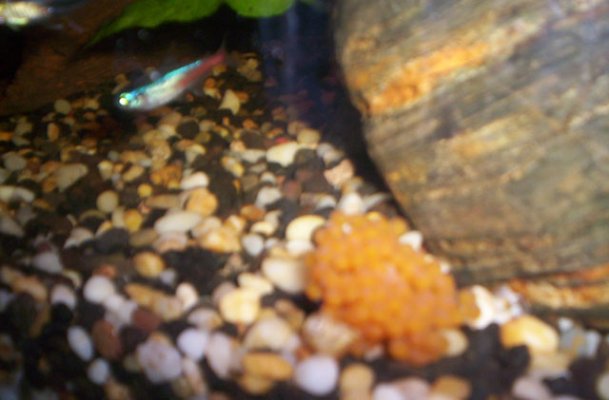 bristle-nose_eggs_afloat_158.jpg75.7 KB · Views: 142
bristle-nose_eggs_afloat_158.jpg75.7 KB · Views: 142 -
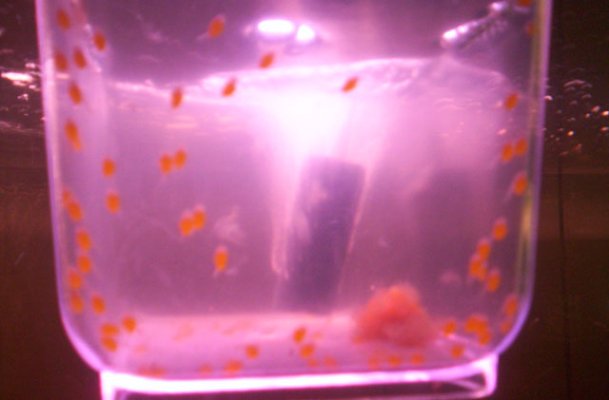 hatching_193.jpg59.3 KB · Views: 158
hatching_193.jpg59.3 KB · Views: 158 -
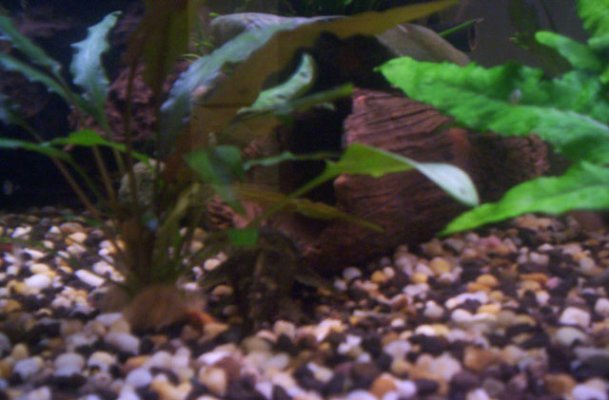 dad_guarding_his_log_197.jpg86.3 KB · Views: 160
dad_guarding_his_log_197.jpg86.3 KB · Views: 160 -
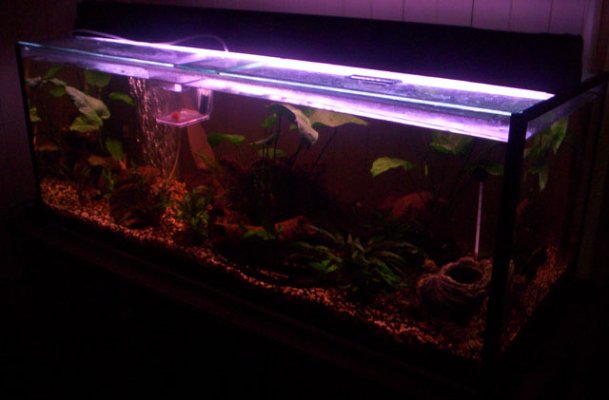 catfish-tetra_tank_765.jpg66.4 KB · Views: 126
catfish-tetra_tank_765.jpg66.4 KB · Views: 126 -
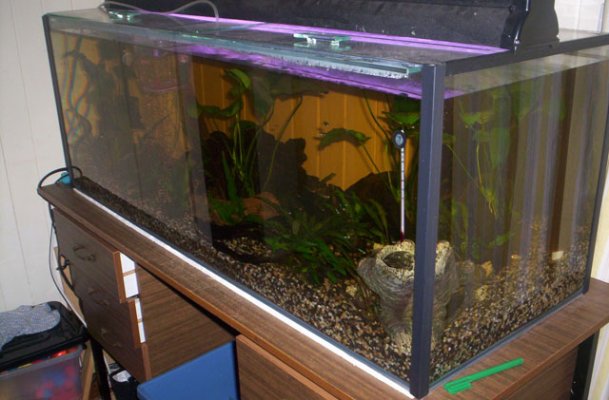 dont_worry_the_table_is_steel_reinforced__lol_792.jpg96.1 KB · Views: 158
dont_worry_the_table_is_steel_reinforced__lol_792.jpg96.1 KB · Views: 158 -
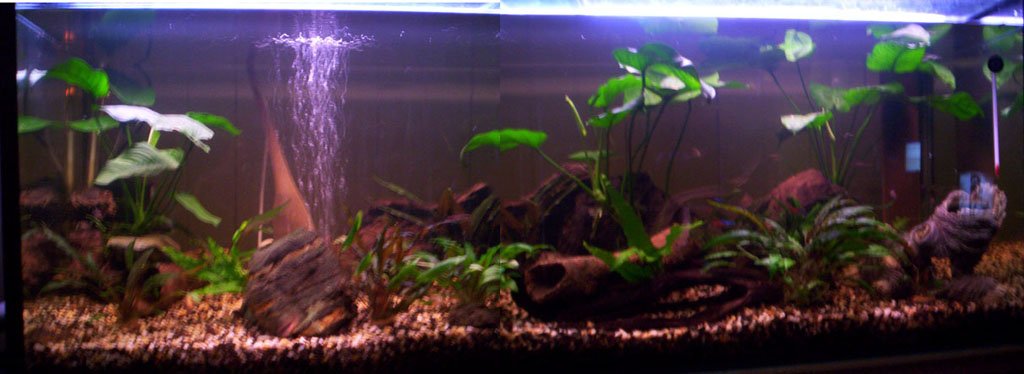 my_pleco___tetra_tank_169.jpg102.4 KB · Views: 173
my_pleco___tetra_tank_169.jpg102.4 KB · Views: 173


